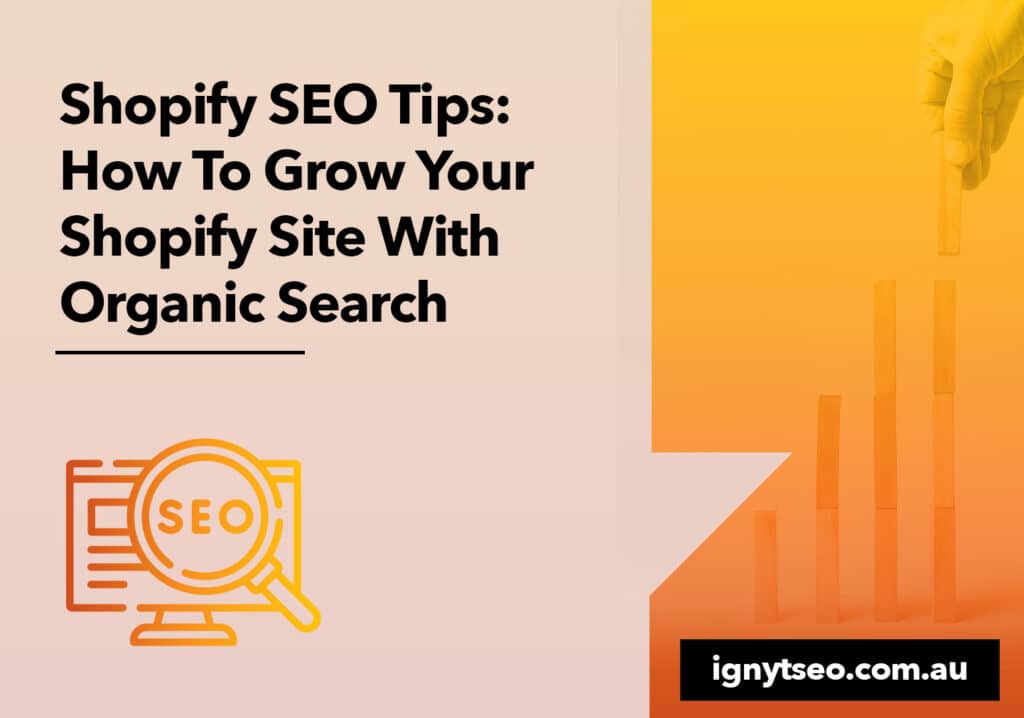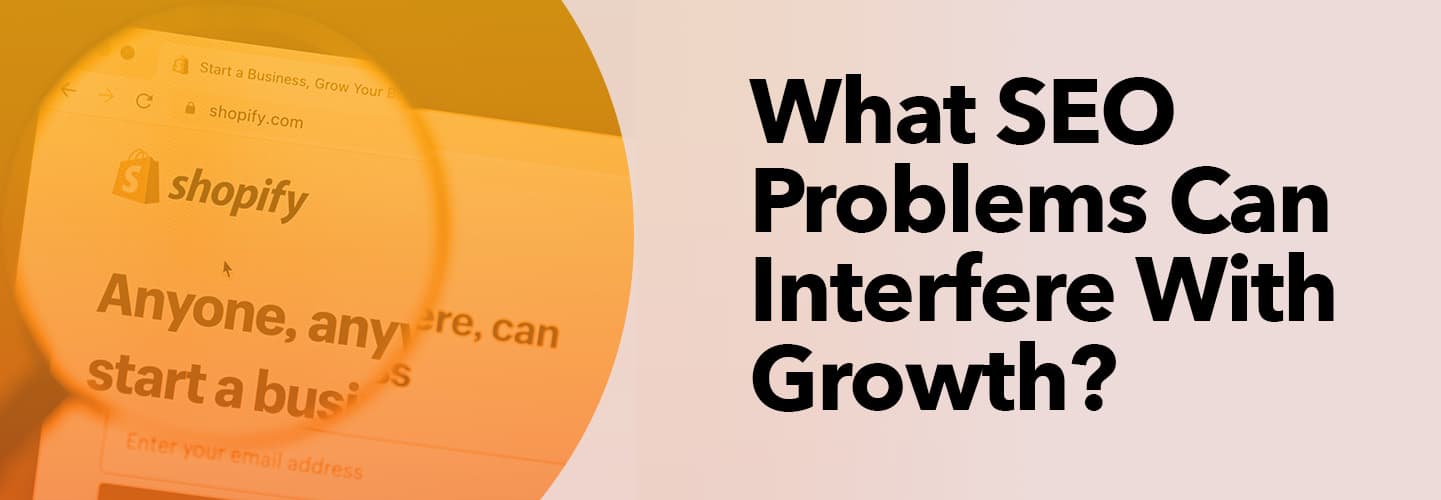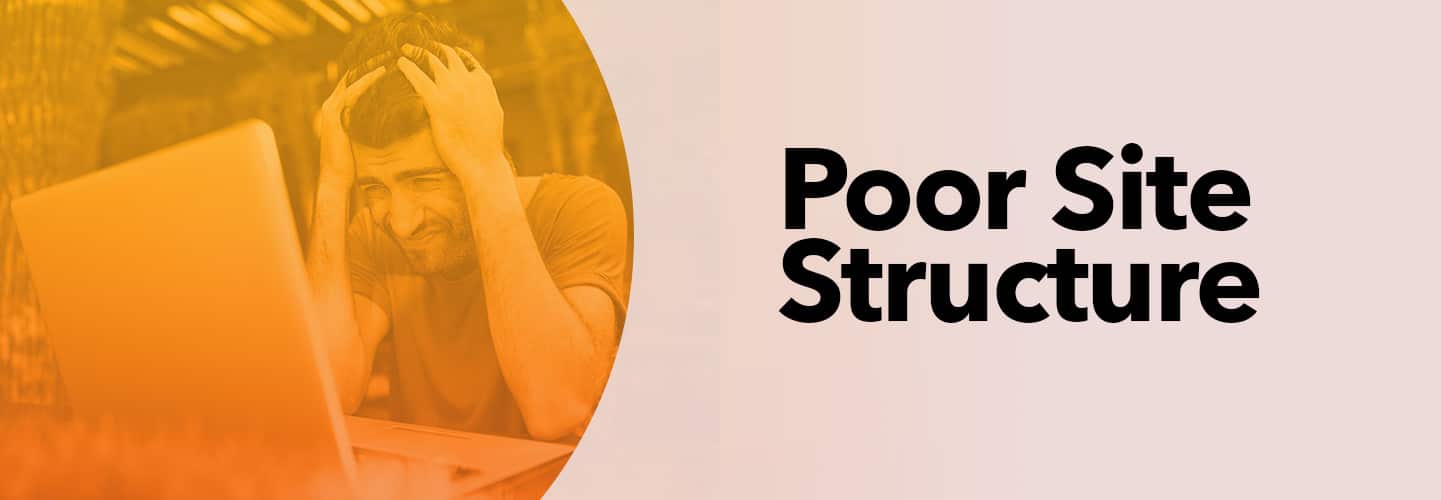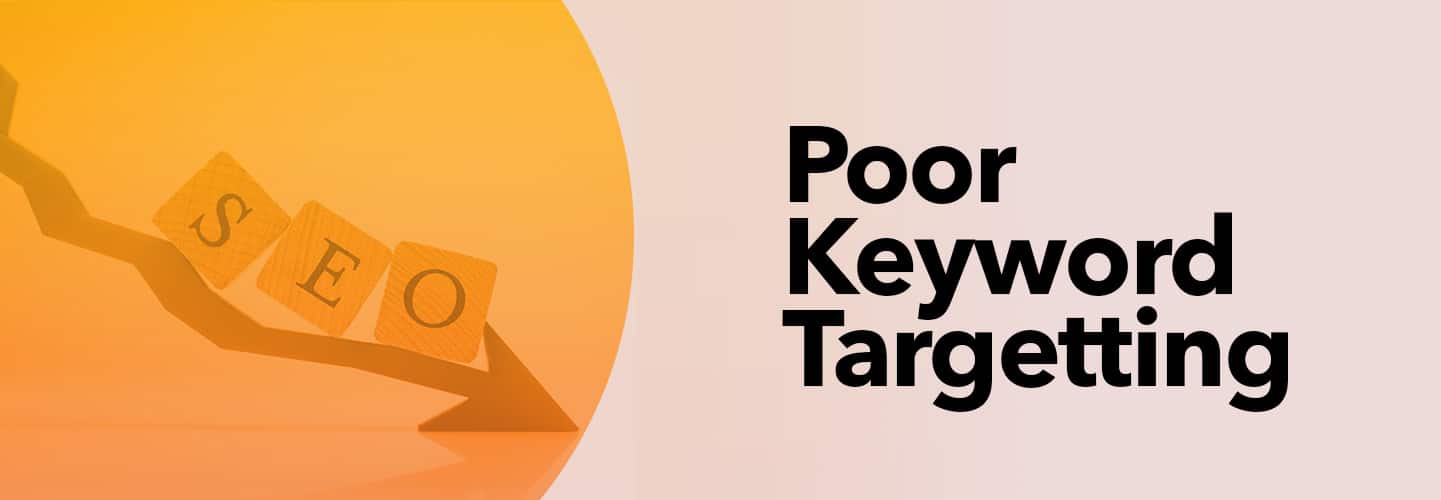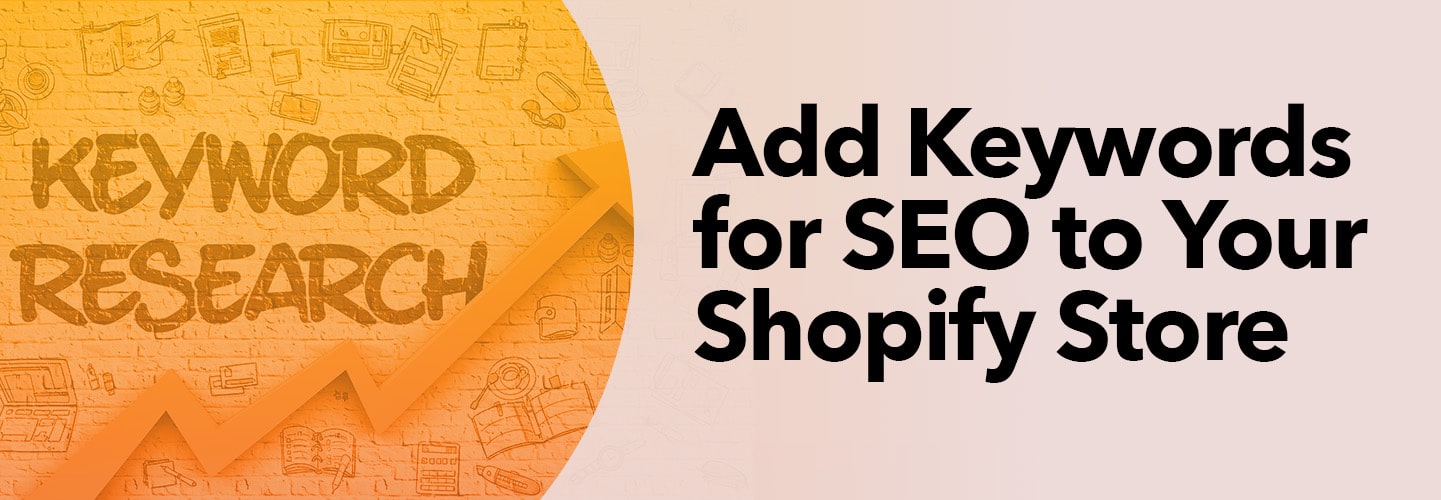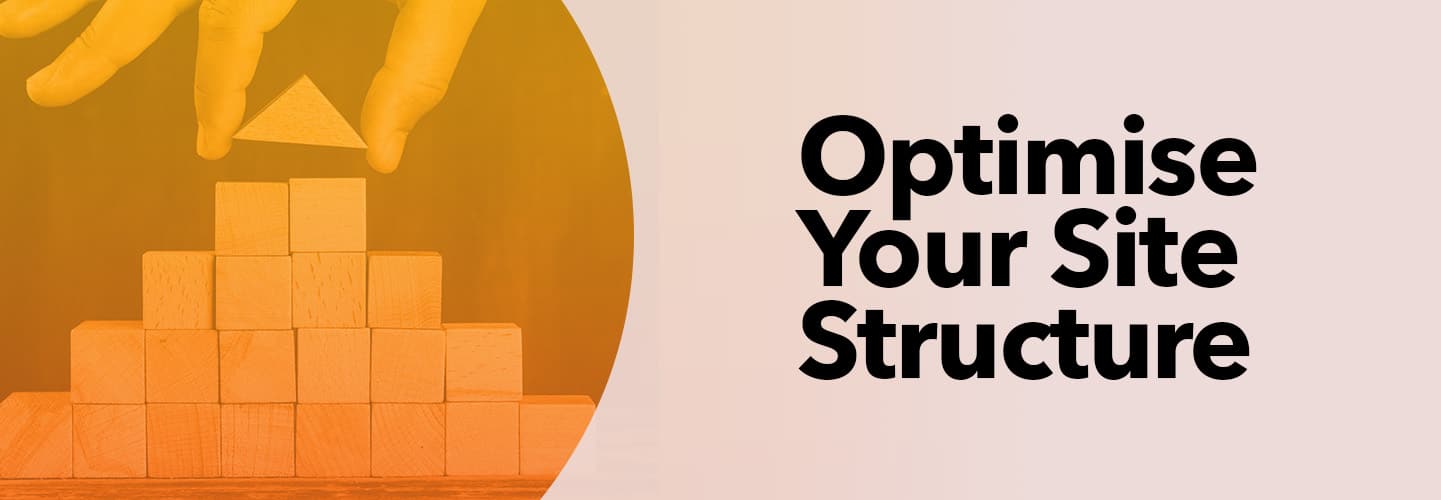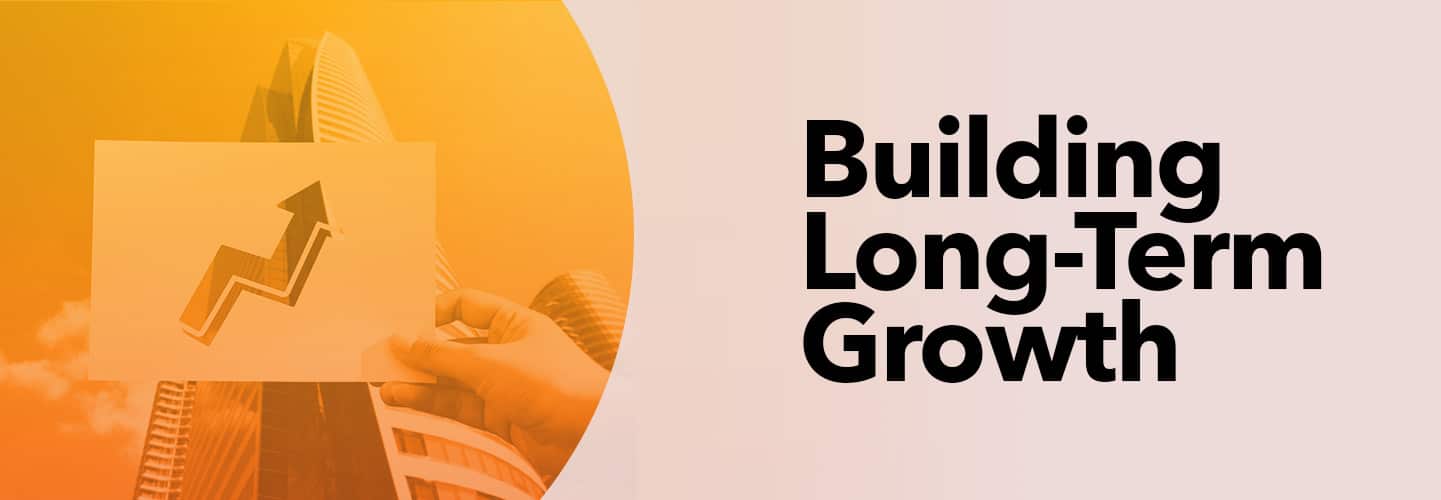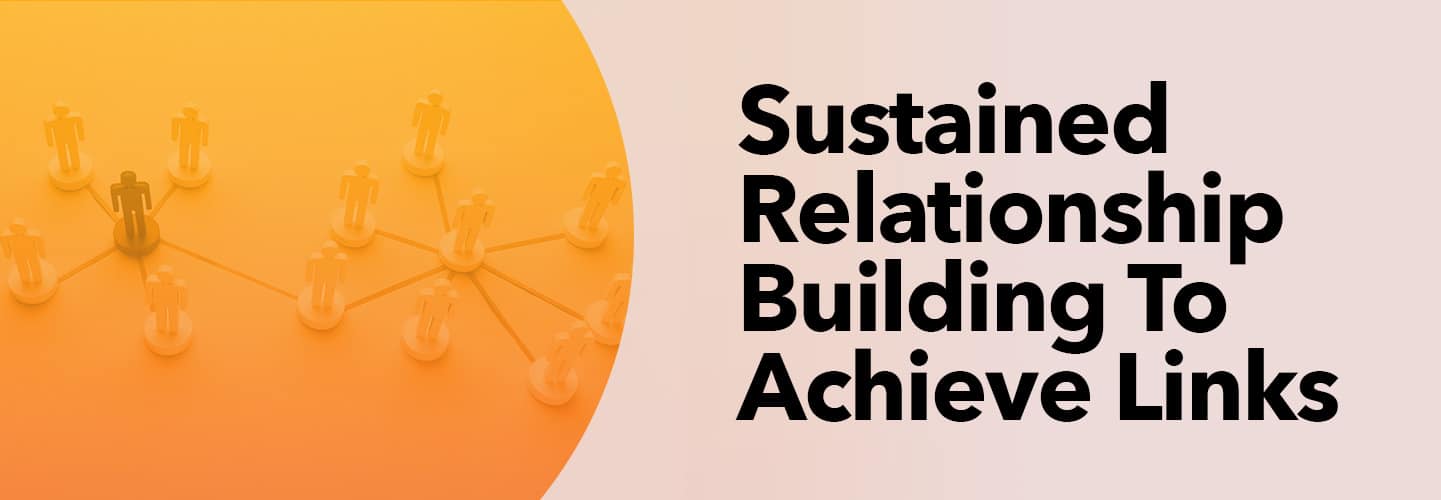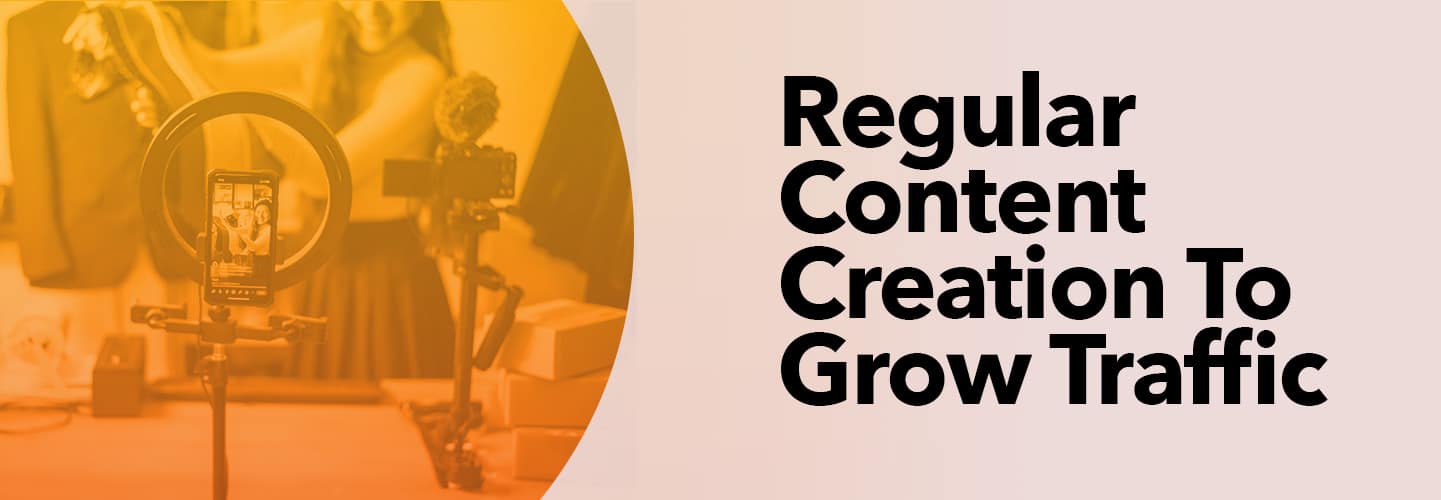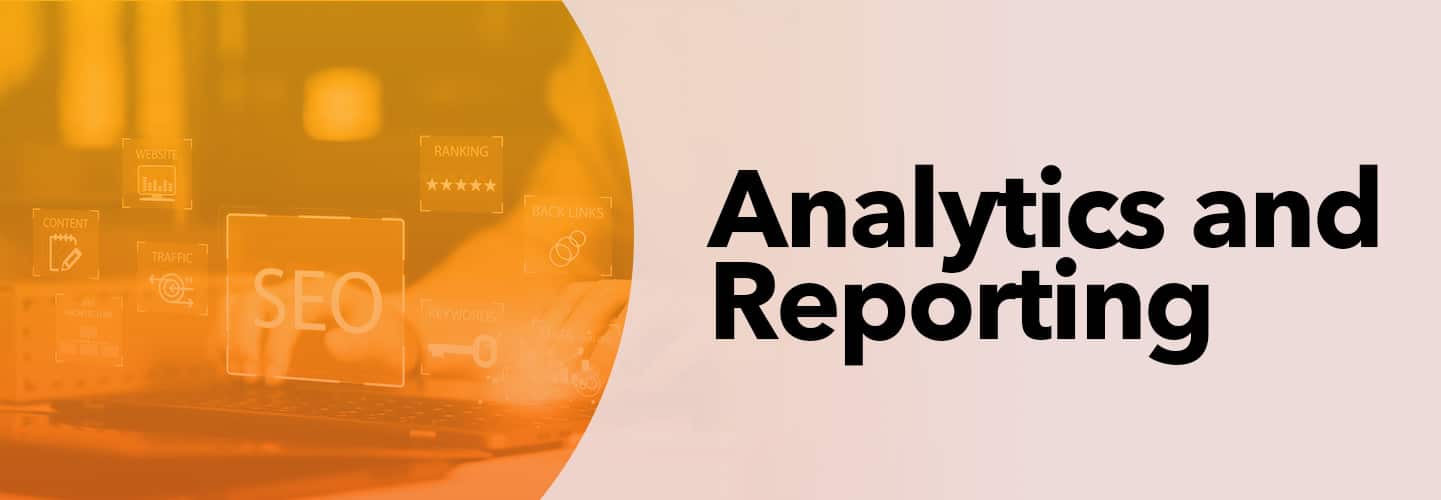Starting from humble beginnings in 2006, Shopify has grown to become the leading eCommerce website platform for online merchants.
With over 4.4 million websites running on the Shopify platform, it’s easier than ever to set up an online store and start selling products!
But with all that competition out there, making your little (or even large) online store stand out from the crowd has never been more important.
Your website is a window into your business.
It stands to reason that if no one can see through that window, you won’t have any customers! So the big question is- how do you get people to find your online store?
Search Engine Optimisation (SEO) is one way.
But Shopify SEO is an even better way!
Is there a difference? Yes.
Let’s explore why Shopify SEO is so vital and how you can use different Shopify SEO tips to effectively grow your online store.
What Is Shopify SEO?
SEO is the practice of optimising your website’s content, structure, and technical elements to improve its visibility and ranking in search engine results pages (SERPs).
Shopify SEO is a specialised form of SEO that focuses on optimising your Shopify store’s content, structure, and other technical aspects.
What are some features of SEO?
Typical SEO
- Focuses on optimising website content, such as blog posts, articles, and static pages.
- Involves optimising different types of content, such as text, images, videos, and audio files.
- Involves a range of on-page and off-page optimisation techniques, such as keyword research, link building, and social media marketing.
- Requires an understanding of website architecture, site speed, and user experience. Plus, technical SEO elements like HTML, CSS, and JavaScript.
- Involves optimising for different search results, such as local, image, and video searches.
- Usually involves optimising for various search engines, including Google, Bing, and Yahoo.
And what does Shopify SEO involve?
Shopify SEO
- Focuses on optimising Shopify-specific content, such as product pages, collections, and checkout pages.
- Involves optimising product titles, descriptions, images, and meta descriptions to ensure they are keyword-rich and optimised for search engines.
- Requires an understanding of Shopify’s unique structure and technical elements, such as URL structures, canonical tags, and sitemaps.
- Involves optimising for mobile devices, which is crucial for e-commerce websites.
- Requires knowledge of optimising Shopify’s templates and themes to ensure they are SEO-friendly.
- Involves optimising for Shopify-specific search results, such as product listings on Amazon or Google Shopping.
- Usually focuses on optimising for Google since it’s the dominant search engine most online shoppers use.
These are the main differences between general SEO and Shopify SEO.
At the end of the day, Shopify SEO is just an extension of general SEO but focuses explicitly on Shopify websites.
Both practices involve the same core SEO fundamentals, so you shouldn’t be afraid to leverage any existing SEO knowledge you may have when optimising your Shopify store.
Let’s start by looking at some of the common problems that will affect the growth of your site.
Please don’t be disheartened if you discover your site has some of these problems.
Keep in mind that identifying problems is the first step to making changes!
After identifying areas for improvement, we’ll delve into troubleshooting using handy Shopify SEO tips to optimise your store for search engine visibility.
What SEO Problems Can Interfere With Growth?
Building your Shopify store is relatively easy. Some online tutorials say you can have your store up and running in as little as 30-60 minutes.
But getting your store to appear in search engine results is another ball game.
Unfortunately, that will take longer, especially if you are not up to speed on the nuances of Shopify SEO.
Here are some of the most common SEO problems that can hinder your store’s growth.
- Poor site structure
- Lack of unique and relevant content
- Poor keyword targeting
- Poor mobile optimisation
Poor Site Structure
Website structure is a major obstacle to your Shopify store’s growth potential.
Suppose you haven’t correctly optimised your site’s structure for search engines.
If this is the case, it will negatively impact your site’s rankings in search engine results pages, making it harder for customers to find your store and products.
Or perhaps your Shopify store has broken links or pages that aren’t properly indexed.
This issue will slow search engines from crawling your site. These broken links can lead to duplicate content issues if pages are indexed multiple times or similar content is used on multiple pages.
Duplicate pages are a common problem for Shopify stores because of the sheer number of product pages.
Poor website structure also makes navigating a site difficult, resulting in higher bounce rates and lower engagement.
Bounce rate is the percentage of visitors leaving your site after viewing only one page.
A high bounce rate indicates that users are not finding the content they’re looking for, leading to decreased sales and conversions.
To fix site structure issues, you need your site optimised and organised correctly for search engines.
Such optimisation should include
- Properly using canonical tags
- Creating an XML sitemap
- Ensuring that all links on the site are working correctly
By addressing website structure issues, your Shopify store will be on track to improve its rankings, attract more traffic, and ultimately grow your business.
Later in this article, we’ll look at how you can correct structural issues.
Lack of Unique and Relevant Content
Search engines prioritise websites with high-quality, unique, and relevant content.
Google is now putting extra focus on E-A-T (expertise, authority, and trustworthiness) when ranking websites.
This focus means that sites with constantly updated content directly addressing users’ needs will have an edge in the SERPs (search engine results page).
If your store lacks original, relevant, and helpful content, it will negatively impact search engine rankings.
Low search engine rankings make it more challenging to attract customer traffic, limiting your store’s growth potential.
A lack of unique content also leads to less user engagement and conversion rates, resulting in a higher bounce rate.
If the content on your Shopify store is not engaging or useful to users, customers will likely spend less time on your site.
So what’s one Shopify SEO tip that can assist you in this area? Always have unique product descriptions that offer beneficial information to your customers.
Descriptions should include
- Product features. A short description of the product, highlighting every feature, big and small.
- Benefits. If a customer compares two similar products, the one that lists benefits will likely be chosen. If customers see how your product can benefit them personally, they’ll be more likely to purchase it.
- Detailed images. Make sure you include high-quality photos of the product from different angles. Never use stock images. Customers who see generic images are likelier to lose trust in the product.
- Sizing information. This feature may seem irrelevant but don’t underestimate how important it is. If you provide exact measurements of your product, customers will know exactly what to expect when buying. This small detail can make all the difference between them buying your product over the competition.
Poor Keyword Targeting
Poor keyword targeting is another common SEO problem that can interfere with the growth of your Shopify store.
If your site doesn’t use relevant keywords or target the right keywords, it may not appear in search results for its target audience.
This limits your store’s visibility, traffic, and, ultimately, its growth.
To remedy this, you should conduct thorough keyword research to identify the most relevant and valuable keywords for your target audience.
You must then strategically place these keywords in your site’s content, including titles, headings, descriptions, and product pages.
Now a word of warning! It’s essential to avoid “keyword stuffing”. This practice involves excessively using keywords in your content to manipulate search engine rankings.
Keyword stuffing often leads to search engine penalties and harms your store’s ranking. We’ll consider more details on keyword tips later on.
Poor Mobile Optimisation
With over 60% of website traffic coming from mobile users, you lose a massive amount of potential customers and revenue if you don’t optimise your store for mobile devices.
Using a responsive design will make your store mobile-friendly. This design includes correctly displaying your content and images on all devices- tablets as well as phones.
What’s more, search engines also consider mobile optimisation as a ranking factor.
So sites that are not mobile-friendly may be ranked lower in search results, leading to reduced visibility and traffic for your store.
Increasing your website speed is another way to increase mobile optimisation and help keep mobile users on your site for longer.
Try using these techniques:
- Image optimisation. Large images on sites are the number one cause of slow load times. Compressing images is an effective way to reduce the size without sacrificing quality.
- Minimising the use of plugins. Plugins add extra code for functionality to a website. However, as the browser must load and process that extra code, the page loading time often increases. So only use essential plugins and delete unnecessary ones.
- Enabling browser caching. If you want your site’s load speeds to go from a snail’s pace to a cheetah, enabling browser caching is the way to go. It stores website information in the visitors’ web browsers, so they don’t have to re-download certain elements every time they visit your store.
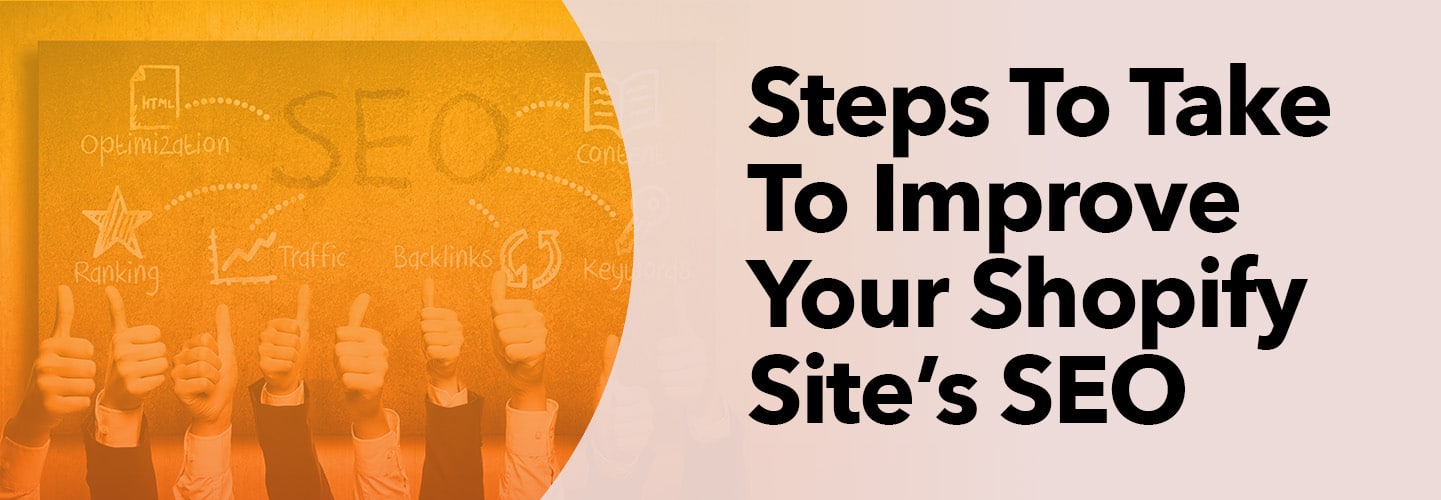
Steps To Take To Improve Your Shopify Site’s SEO
SEO can take years for you to truly master. But we know that you haven’t got years to wait!
If your Shopify store is already up and running, you’re likely looking for fast results.
It’s imperative to remember that results don’t happen overnight.
SEO is known as a long-term game for a reason. But there is good news.
The earlier and more consistently you implement SEO strategies, the sooner you will start to reap the rewards and drive more organic traffic to your Shopify store.
And it’s never too late to start! Google actively updates their algorithms and changes how they rank sites, so don’t feel like you’ve missed the boat on SEO.
Try implementing SEO strategies now to see what they can do for your Shopify store.
Let’s start with basic Shopify SEO tips to improve your store’s online presence.
Add Keywords for SEO to Your Shopify Store
Adding relevant keywords to your Shopify store is crucial for SEO as it helps search engines understand what your store is about and what type of products and content it offers.
By including the right keywords in strategic locations throughout your store, your search engine rankings can improve, increasing your chances of attracting more relevant traffic.
To find the right keywords for your Shopify store, use research tools like Google Keyword Planner, Ahrefs, or SEMrush.
These tools effectively identify keywords relevant to your store’s products or services with high search volumes.
Look for keywords with low to moderate difficulty, as your store will have a better chance of ranking for those terms.
Once you’ve identified the right keywords to use, start adding them to key locations on your site.
Here are some key location suggestions.
- Page titles are the first thing search engines see and can significantly impact search engine rankings. Including relevant keywords in page titles will boost visibility in search results.
- Meta descriptions provide a brief summary of the page’s content. Include relevant keywords in your meta description to improve search engine rankings. Keep your meta word count between 150-160 words, and make sure that it accurately describes the page.
- Header tags (H1, H2, H3, etc.) are used to structure the content on a page and help search engines understand the page’s hierarchy. They are a great area to include keywords.
- Product descriptions should be written to appeal to customers and include relevant keywords to improve search engine rankings.
- URLs should be short, descriptive, and include applicable keywords to aid search engines in understanding your page’s content.
As we mentioned earlier in the article, you mustn’t overuse keywords.
Google actively penalises websites for keyword stuffing.
An example of keyword stuffing would be including the same keyword over and over again on a page or using keywords that are entirely irrelevant to the content.
Your aim should always be to write natural-sounding content that reads well.
Optimise Your Site Structure
Think of your website as a house. Like a house, your site needs to have a good foundation and be adequately structured to function and stand the test of time.
A well-structured website with straightforward navigation is key to providing a great user experience, allowing visitors to quickly find what they want.
Optimising your site structure is also crucial for SEO.
A well-structured website facilitates search engines to understand your content’s hierarchy and organisation, which helps them rank your pages in search results.
Here are some tips for effectively optimising your site structure.
- Use a clear and logical hierarchy. Your site’s structure should have a clear and logical order with a main navigation menu that’s easy to use and understand. Try organising your content into categories and subcategories that make sense for your business and audience.
- Use descriptive URLs. As we just discussed, your URLs should be descriptive and include relevant keywords that accurately reflect the content on the page. This assists with SEO and makes it easier for users to understand your page’s purpose.
- Use internal linking. Internal linking is a perfect way to create a logical hierarchy and allows users to easily navigate your site. Be sure to link to relevant pages within your site and use anchor text (the clickable part of the link) that accurately describes the content of the page you’re linking to.
- Implement breadcrumbs. Breadcrumbs are a navigational tool that shows users where they are on your site and how they got there. They also help search engines understand the structure of your site and the relationship between your pages.
- Use header tags. Header tags (H1, H2, H3, etc.) assist in organising your content and signals to search engines the hierarchy of your pages. Use them to break up your content and make it easier to read for users. For example, you wouldn’t start the content on your page with a H3 tag and then go to a H1 tag. Start with a H1 tag, then use H2s and H3s to break up the content.
- Remove duplicate content. Duplicate content on your site confuses search engines and will hurt your SEO efforts. Make sure to remove any duplicate content on your site or use canonical tags, which tell search engines which version of the content is the original and should take precedence.
Find and Submit Your Sitemap
Submitting your sitemap is easily one of the more important Shopify SEO tips to improve your online store.
It makes sure search engines can easily crawl and index your website.
Submitting your sitemap is also the best way for search engines to know all the pages on your site.
The benefit of indexing all your pages is that it increases your site’s visibility, helping to potentially boost SEO rankings.
Finding your sitemap is quite an easy process. Type your URL into your browser with “/sitemap.xml” added to the end to bring up your sitemap.
Once you’ve found your sitemap, copy it and submit it to Google Search Console and other search engines like Bing and Yahoo for better indexing.
Before submitting it to your Google Search Console, you’ll need to check that your website isn’t password protected, as this will prevent it from being indexed.
Using a tool like Screaming Frog to find any broken links or redirects on your site is also a good idea so you’re able to fix them before submitting your sitemap.
How do you submit your sitemap to Google? Log in to your Google Search Console account and click the “Sitemaps” option.
From there, add your sitemap and submit it to be indexed. Doing this will help search engines crawl and index your site’s pages.
If you don’t have a google console account, you can easily create one to submit your sitemap.
Having a Google Search Console account is a huge benefit as a Shopify owner because it will give you access to valuable data and insights about your site’s performance in the search results.
So if you don’t already have an account, create one and take advantage of all its excellent features!
Hide Pages From Search Engines
Hiding pages from search engines may seem counterintuitive as you want search engines to be able to find and index your pages.
But there are certain pages that you don’t want to be indexed by search engines.
These pages include thank you or confirmation pages, checkout processes, or any other pages that don’t need to be found through a search engine.
Why don’t they need to be found? Because having too many pages indexed not only wastes search engine resources but can also lead to duplicate content.
To prevent this, you’ll want to hide such pages from being crawled and indexed by search engines.
To hide a page from search engines, access the HTML code of your page and add the “noindex” tag to the header of that page.
This tag tells search engines not to include this page in their index, meaning it won’t appear in the search results.
Please note that you should only use the “noindex” tag on the abovementioned pages that are irrelevant to your site.
Adding Blogs for Your Site
You might be thinking, “why do I need blogs when all I want to do is sell my products?” Because having blogs on your site assists in optimising your Shopify store for search engines.
Having blogs relevant to your store is a great idea for these reasons.
- SEO. Search engines reward sites with new, unique, relevant content. Blogs allows you to create this kind of content, in turn boosting your visibility in the search results. Incorporating relevant keywords into your blog posts can improve your site’s search engine ranking and attract more organic traffic.
- Branding. Blog posts let you showcase your brand’s personality and values, helping establish a stronger connection with your target audience. If your readers can connect and feel a part of your brand, they are more likely to become loyal customers.
- Engagement. Providing informative and engaging content will encourage engagement from your audience. This engagement can increase social media shares, comments, and likes, which facilitates building a loyal following. The bigger the following, the more potential customers you have.
- Leadership. By sharing insights and advice through your blogs, you will establish yourself as a leader in your industry, gaining credibility and trust with your audience.
- Sales. Blogs have the ability to drive more sales. By creating content tailored to your target audience’s needs and interests, you can promote your products and services in a way that feels natural and helpful rather than pushy or “salesy.”
With so many benefits, clearly, blogs should have a place on your Shopify site.
As search engines like Google love current and relevant content, keeping your blogs up-to-date is essential.
Post blogs regularly and keep the content interesting to your target audience to increase traffic to your site. Remember this Shopify SEO tip; more traffic means more sales!
Building Long-Term Growth
All the SEO tips for Shopify we’ve mentioned up to this point are actionable ways you can optimise your online store.
But you should consider other long-term methods to increase your site’s visibility in the SERPs and drive more organic traffic to it.
One long-term growth method is to use an agency to help you with your SEO.
An agency can identify weaknesses in your SEO strategy and create a plan of action to turn these into strengths.
Such a strategy could involve conducting keyword research, on-page optimisation, link building, content creation- the list goes on!
The benefit of using an agency is that they have up-to-date knowledge and expertise in the ever-evolving field of SEO.
The right agency can execute an effective SEO plan to produce optimal results.
Let’s look in detail at ways an agency could lend a hand in optimising your Shopify store.
In-Depth Keyword Research
An SEO agency will conduct in-depth keyword research using various tools and techniques to identify the most relevant and high-traffic keywords for your Shopify site and target audience.
They then analyse your site’s existing content and identify gaps where you need to use relevant keywords.
A high-quality agency will also carry out competitor analysis.
Once they understand what keywords drive traffic to competitors’ sites, they’ll use that information to optimise your site’s content.
Additionally, they’ll use keyword research to identify long-tail keywords that may have less search volume but are highly relevant to your site and audience.
The benefits of having an SEO agency perform keyword research include
- Higher visibility in the SERPs (search engine results page)
- More organic traffic to your site
- A better understanding of customer needs and interests
- More targeted content to drive sales
- Higher conversion rates
Sustained Relationship Building To Achieve Links
Link building is essential to any SEO strategy, as it increases your site’s authority.
An agency can use this Shopify SEO tip to build relationships with other websites and organisations so that they link back to your content or website.
Genuine link building involves reaching out to influencers in your industry, creating partnerships with other businesses, and guest blogging on relevant sites.
All this will increase your brand’s visibility, build domain authority, and drive more organic traffic to your site.
The benefit of using an agency to help build links is that they have the expertise and resources to identify potential link opportunities you may not be aware of.
They can also improve your outreach strategies, making your requests more likely to be accepted.
An agency will already have contacts within the industry and established relationships with influencers and websites, making it easier for them to secure links.
Regular Content Creation To Grow Traffic
As we’ve discussed, creating content like blogs and videos for your site is vital to SEO.
But what if you don’t have time to write blogs or create videos? Running a business takes time and energy; while trying to do it all is admirable, you’re only human!
An SEO agency is a valuable asset in this area.
They’ll do all the leg work for you in creating high-quality content to optimise your site.
They’ll assist in identifying topics relevant to your industry, producing engaging copy, developing scripts and videos, and lastly, researching competitors to ensure your content is of the highest quality.
The benefit of using an agency for content creation is that they have the knowledge and expertise in this area.
They’ll create a content strategy that clearly shows you a plan of action for producing content optimised for search engines and engaging your audience.
Seeing this planned out will help you track progress and measure the success of your site.
As well as researching content topics and writing said copy, an SEO agency can assist with other aspects of the content creation process, such as creating visuals and promoting the content on social media.
Having help with all of this will save you time and money in the long run, freeing you up to focus on other areas of your business.
Analytics and Reporting
Another great thing about using an SEO agency is its ability to provide analytics and reporting.
An agency will keep track of your store’s performance and monitor key metrics such as organic traffic, conversions, and rankings.
They then use this data to identify areas of improvement.
An agency has the experience to interpret this data and identify actionable insights.
Their advice will equip you with the knowledge to make more informed decisions about your marketing strategies, ultimately helping to drive more traffic to your Shopify site.
For example, an agency could use analytics data to identify which content gets the most engagement or which keywords perform best in your industry.
They can then use this information to develop a content strategy to capitalise on those trends.
Using an agency that focuses on SEO for Shopify stores is a great way to optimise your site.
They can help with link building, keyword research, content creation, and analytics so your store is visible in the SERPs.
If you want to drive more organic traffic to your store and increase conversions, an SEO agency is worth its weight in gold!
Do You Need Help Growing Your Shopify Site?
Do you have a Shopify store but need a hand growing it? Engaging the services of an SEO agency to optimise your Shopify site is the best way to procure long-term, sustainable growth.
As a highly skilled SEO agency, we understand the challenges and complexities of marketing a successful Shopify store.
Our team of specialists here at Ignyt SEO have valuable experience in creating strategies tailored to your needs, from keyword research to link building, content creation, and more.
We’ll work closely with you throughout the SEO process so you can reach your Shopify goals.
And with us handling your SEO, you’ll have more time to do what you do best- run your store!
If you’re looking for a reliable and experienced SEO agency to help grow your Shopify site, contact Ignyt SEO today.
We work with businesses of all sizes, from small start-ups to large enterprises.
Whatever your business size, we’re committed to achieving the best possible results for your site through high-quality, well-managed SEO.
Call us or complete our online enquiry form today. We look forward to hearing from you!


